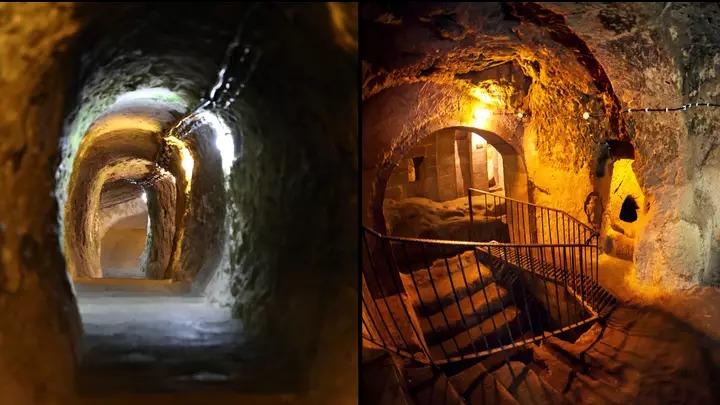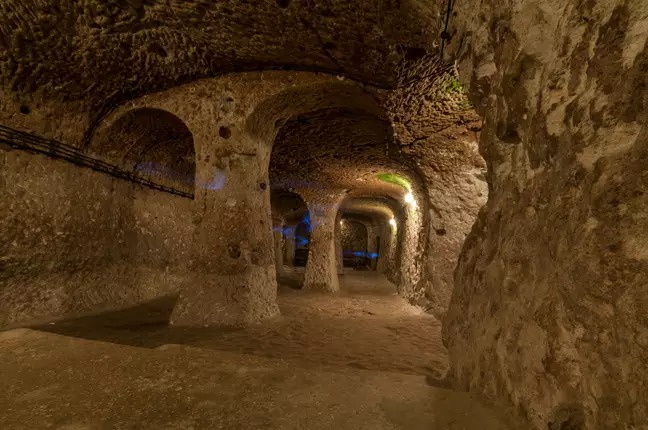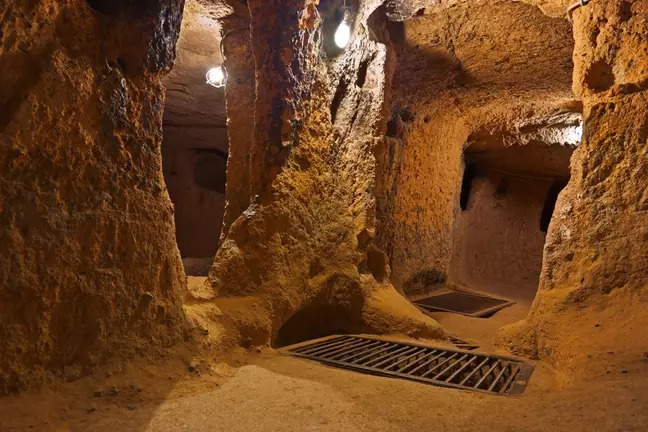
In a remarkable twist of fate, a man searching for his missing chickens stumbled upon an extraordinary discovery—an ancient city that had been lost to time, once thriving with a population of around 20,000 inhabitants.
Picture the scene: a Turkish man notices his chickens mysteriously vanishing one by one. Determined to solve the mystery, he investigates the basement of his house, hoping to find clues. Instead, what he encounters is beyond his wildest imagination. Behind a wall, the man discovers a hidden tunnel, which leads him to an underground city known as Elengubu, previously lost to history.

This remarkable incident occurred in 1963, and while the fate of the chickens remains unknown, the significance of the city of Elengubu, now known as Derinkuyu, cannot be overstated. Situated approximately 280 feet below the surface in Cappadocia, Turkey, Derinkuyu is believed to be the largest excavated underground city ever discovered, consisting of multiple levels and capable of accommodating up to 20,000 inhabitants.
Within its depths lie public spaces, residential areas, schools, a church, and other essential facilities that one would expect to find in a fully functioning underground city. Since the discovery of Derinkuyu, around 200 smaller underground cities have also been identified in the surrounding area, although much of their contents remain unexplored.

Experts suggest that the origins of Derinkuyu can be traced back to between the 15th and 7th centuries BCE. According to researchers from Made In Turkey, there is a prevailing belief that the underground metropolis served as a refuge, enabling its inhabitants to hide from enemies. This purpose was particularly significant during the Byzantine period when Christians sought sanctuary from Roman persecutors. Upon their arrival in Cappadocia, Christians expanded and modified the existing structures of Derinkuyu, adding churches, schools, wineries, and other chambers to suit their needs.
It is fascinating to note that Derinkuyu continued to serve its purpose until the early 1920s when Christians in the region were compelled to relocate to Greece. Plans are underway to open the site to tourists, offering a unique opportunity to explore this subterranean wonder. As the excavation efforts continue, it is hoped that further captivating discoveries will be unearthed, shedding light on the secrets of this ancient underground city.

Leave a Reply